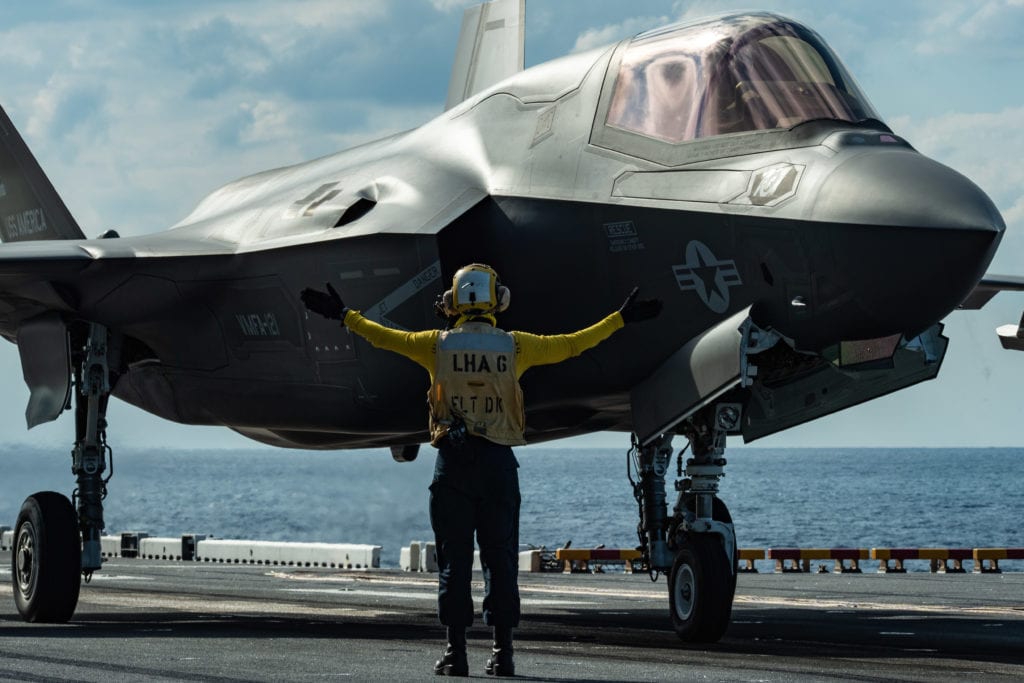
ARLINGTON, Va. — The chairman of the House Armed Services Committee says he’d like the Defense Department to stop buying the troubled and massively expensive F-35 Lightning II strike fighter.
In a wide-ranging discussion livestreamed March 5 by the Brookings Institution, a Washington think tank, the chairman, Washington Democrat Rep. Adam Smith, said “our acquisition and procurement process over the last 20 years can only be described as a complete disaster.”
Citing development and maintenance problems or cost over runs with the F-35 — believed to be the world’s most expensive weapons platform — as well as the Navy’s Littoral Combat Ship and the Marine Corps’ canceled Expeditionary Fighting Vehicle, Smith said “we on the Armed Services Committee have to seriously scrub those programs like the F-35,” adding “we have to make sure that we don’t waste any more” money.
“What does the F-35 give us, and is there a way to cut our losses?” Smith asked, noting “the sustainment costs are brutal.” Originally planned to replace 90% of U.S. strike fighter aircraft, Smith conceded “you can’t get rid of the program,” but as HASC chairman said he was seeking “a mix of fighter/attack aircraft that’s cost effective.”
The Marine Corps has converted five squadrons to the F-35B vertical takeoff and short landing variant of the fifth-generation strike fighter. The Navy’s first fighter squadron to transition from the F/A-18E Super Hornet to the F-35C Lightning II aircraft carrier variant is slated to deploy later this year on USS Carl Vinson. Another squadron will become the Navy’s second fleet F-35C squadron after training at Naval Air Station Lemoore, California. Meanwhile, a Marine Corps squadron has completed transition to the F-35C and is expected to deploy on a carrier in fiscal 2022.
Smith also dismissed Pentagon plans late in the Trump administration to create a 500-ship Navy, many of which would be small ships or unmanned vessels. However, he called submarines “the most important part” of the nuclear triad that includes long range bombers and ground-based intercontinental ballistic missiles.
“We must have nuclear deterrent,” Smith said, “so that nobody thinks they can ever launch any nuclear weapon of any size without paying an unacceptable cost.” He did question, however, whether the United States needed 5,000 nuclear-armed missiles as a deterrent when China has less than 200 nuclear weapons and is projected to double that amount to slightly under 400 weapons in coming years. He wondered whether the United States needed to spend more than $1 trillion to maintain that advantage.
The chairman said he wanted to have a conversation with missile hawks about how large a deterrent nuclear force is needed.
“I will say the submarines are the most important piece of this without question,” he said, adding, “the ability to deliver from the submarines is the most survivable leg of the triad.”
Lawmakers should examine if the United States can achieve the same level of deterrence for less money, “as China has,” he said.
- Shall We Play a Game? Winning Isn’t the Point, Experts Say - April 5, 2023
- U.S. Goal: Maintaining Extended Presence in Arctic’s Harsh Environment - April 4, 2023
- Joint, Combined Exercise Shows Marine Littoral Regiment Idea is on ”Right Track’ - February 24, 2023






